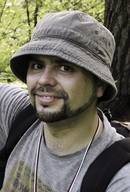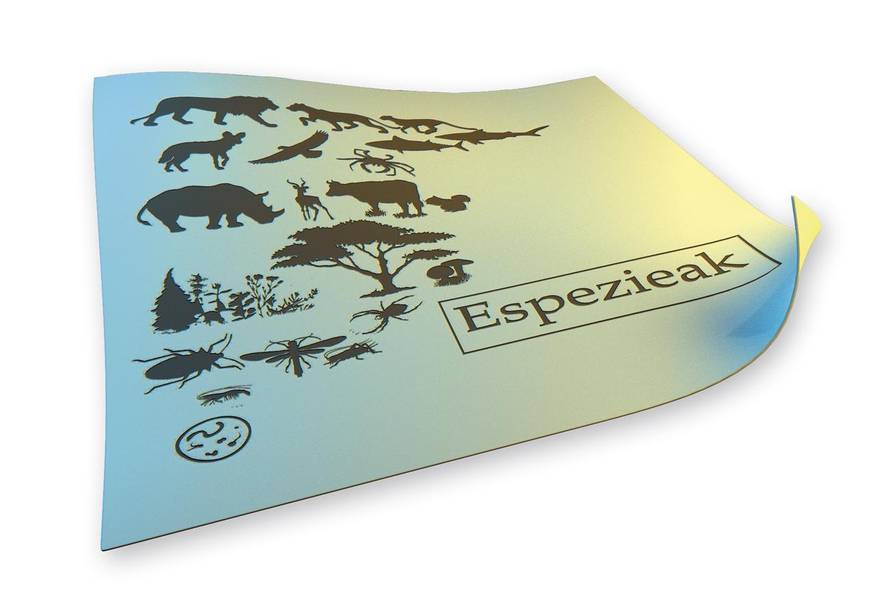Slippery species, viscous stereotypes
It sometimes happens that a certain way of expressing an idea is especially attractive, easily assimilable and reproducible and, finally, difficult to rule out when it is observed that it is not entirely correct. As if it were viscous. It is often criticized, for example, the example used to represent evolution: the row of hominid pedestrians, a modern man erected on the head and a hairy ray and bent on the other end. It is true that the human being comes from other primates, but it is also true that this image conveys an erroneous idea of evolution that suggests a linear process of progress and improvement.
Although it is not so known, there is a similar problem when we want to explain in biology what we mean by the term species. A broad group of people interested in science and many biologists will be rewarded for the endless debate between supporters of one definition and another. They have been unable to reach agreement for dozens of years and will never be of the same opinion, probably because species are human conventions that only exist in our mind. Perhaps the most daring ones defend the biological concept of the species (that definition we learned in the institute, that is, they are groups of populations with joint reproduction capacity and that give rise to later fecunds), the best of the bad definitions.
It must be said that, despite not being the most attractive scientific topic for the majority of the population, it is not necessary to remove importance to this topic: the species is, say, the fundamental unit of biodiversity. It would be worrying to say that the limitations imposed on species are a consequence of decisions arbitrarily made by a small number of biologists, and not by scientific research, taking into account that, in addition to the presence of species in the lists of flora and fauna, these are based on ecological meta-analyses to evaluate climate change or to establish important criteria to prioritize the conservation of certain protected spaces against others.
Fortunately, the real picture is not the folly suggested by the viscous stereotype. Yes, it is true that there is no agreement on how to define a species in the theoretical plane, and it is also true that the appearance of this subject in several circles can suddenly provoke an intense debate. However, the results of the research carried out on the delimitation and location of species do not differ substantially from other scientific conceptualizations: the determination (discussed and touched by errors, as always) is carried out by review by assimilates, being able to be contrasted or revoked by other experts. The debate seems to be on a very theoretical level, but in practice the different concepts do not have to be excluded from each other. As in the account of blind people trying to describe an elephant, the definitions of the species are the result of different views on the same subject: normally a certain species can be known in a coherent way from different points of view (morphological, ecological, phylogenetic..).
What then causes "noise"? No definition of species is insignificant (if any, the debate would not lengthen so much), and at the same time none is insignificant. For example, the biological concept is attractive and viscous, but in no case can it be established as a universal criterion (because it understands hybridization in a very simple way or because it is limited to organisms with sexual reproduction). The different “species concepts” are more useful as a footprint than as a definition. More and more, the description and delimitation of the species requires an integrated analysis of the largest number of possible data: comparative morphology, phylogeny, paleontology, ecology, etc.
It is true that the conceptualization and delimitation of the species is slippery for various reasons. One of them is uncertainty. Finding relationships between organisms and others is a very difficult task, especially if we take into account that we cannot take all organisms and extract their DNA, nor perform crosses between all to see if they have subsequent fecunds, nor know all the fossils of the past to help make a decision or another. Our ignorance is tremendous, so taxonomic decisions are always working hypotheses and often, as we get more information, we replace them with more and more stable ones. We should not confuse this uncertainty with arbitrariness or whim.
Another element to take into account is time. The species are the result of a punctual interruption of the tree of life, but as all the organisms of the biosphere have had the same anchor, the species are part of a continuity in time. This double character, both continuous and discontinuous, becomes a difficulty when a species is separated into two (speciation). The study of a speciation process can be confusing, since we will be seeing a fixed image of a process in development --not predictable -: the different concepts of the species may not be coherent with each other, in cases in which the object of study is in transition, and we will have a false perception that the problem is in different definitions.
Can a science like biology be developed around a key concept that apparently everyone uses, but which cannot be included in a definition of two or three lines? It seems like yes. Although there are viscous stereotypes, there is no reason to question that species are characteristic elements of science, such as genes and ecosystems. The difficulty, perhaps, is the limits of the language and not the capacity we have to find and characterize these entities through the action of undertaking.







